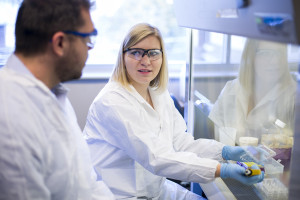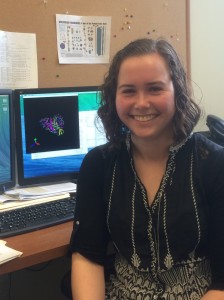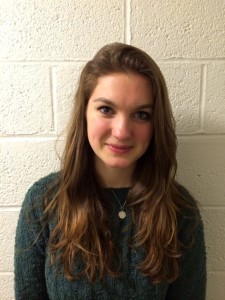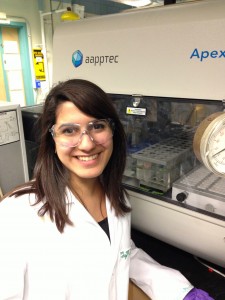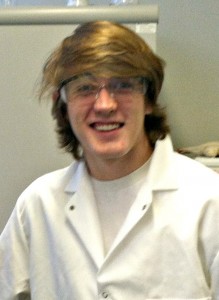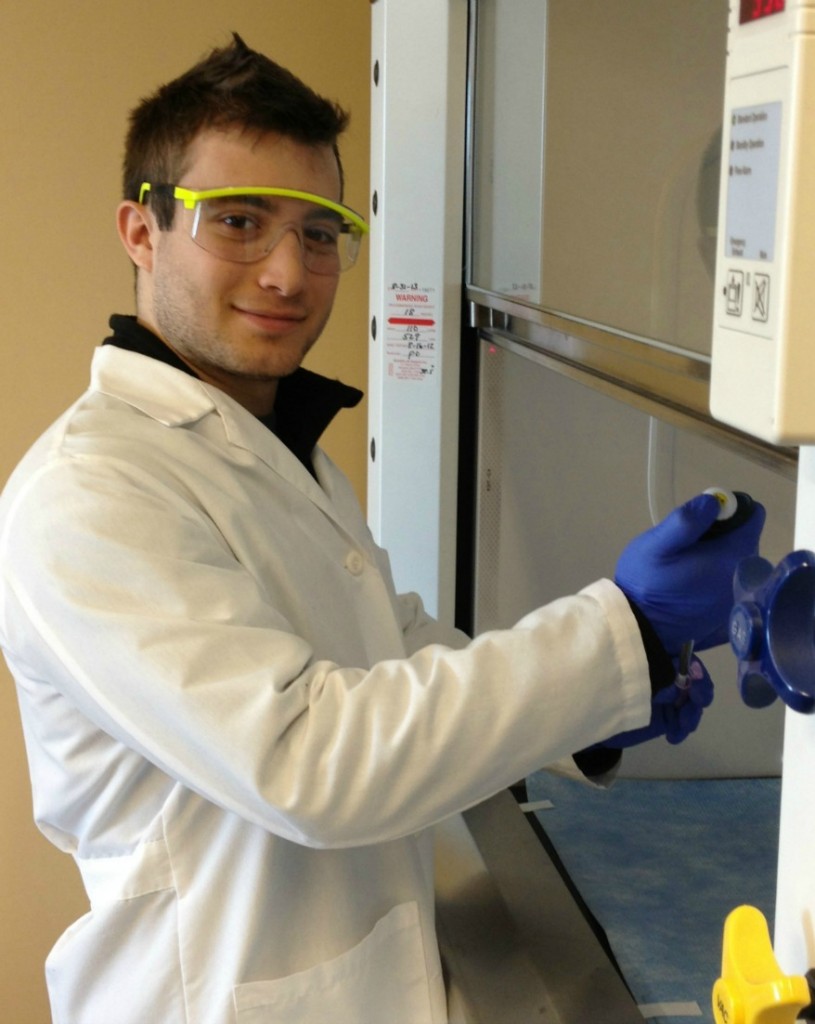To get to know our Scholars even better, watch them discuss their Beckman Scholars experience on our videos page!
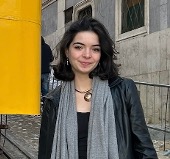 Ella Barton
Ella Barton
Majors: Biology
Graduation: Spring 2026
About Me: I am interested in research intersecting biomedicine and global health care, specifically relating to improving equity and accessibility to life-saving medical technology. I plan to pursue an M.D./Ph.D. after graduation, with the goal of conducting biomedical research and working directly with patients. In my spare time, I enjoy ceramics, playing the piano and cello, running, and traveling.
Research Project: Malaria strains resistant to artemisinin-based drug therapies, the primary treatment for Malaria, are spreading rapidly. Not only do these strains increase recovery time, they also threaten the global Malaria elimination campaign and increase selective pressures on partner therapies. The bulk of artemisinin resistance has already been linked to mutations to the K13 “propeller” gene. Although sequencing can identify these mutations, analyses are very costly and require a clinical environment that is inaccessible in resource-limited settings. As a result, although we have treatment options and tests for Malaria, there is currently no viable test for specific Malaria strains correlating to this drug resistance. My project aims to address this through the creation of a point-of-care test to detect drug resistance in Malaria.
Nicholas Cardi
Majors: ACS-Certified Chemistry
Graduation: Spring 2026
About Me: Currently, I am interested in studying organic chemistry, specifically physical organic chemistry with a focus on molecular assemblies and their applications in chemical biology. After graduation, I hope to pursue a Ph.D. in chemistry with the goal of eventually becoming a professor. Outside of the lab, I enjoy ceramics, baking with friends, and searching for the best bagel in Boston.
Research Project: Cyclic tetrapeptides have promising biological activity and advantageous drug-like properties, making them enticing drug candidates. However, cyclizing these peptides into their final strained rings poses a significant synthetic challenge. Current methodologies are limited, suffering from low yileds, long reaction times, and requiring specific turn-inducing amino acids in the peptide sequence. These challenges limit the number of cyclic tetrapeptides we can access. My project investigates a new supramolecular catalyst to improve the efficiency of these reactions. This catalyst forms a pair-inclusion complex with the two non-terminal amino acids of the peptide, inducing a turn that pushes the ends together, promoting cyclization. I hope this catalyst will remove the need for turn-inducing motifs, widely expanding the number of accessible cyclic tetrapeptides..
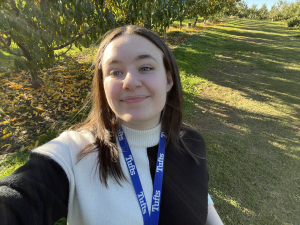 Calli Recck
Calli Recck
Majors: ACS-Certified Chemistry
Graduation: Spring 2025
About Me: I’m interested in Inorganic Chemistry and sustainability research, specifically focusing on decarbonization and Direct Air Capture. I want to pursue my Ph.D. in chemistry after I graduate from Tufts, and eventually want to direct my own sustainability lab. Outside of research, I enjoy reading and hiking, and I am a member of the Tufts Chess Club.
Research Project: Direct Air Carbon Capture (DACC) is an industry focusing on removing CO2 from the atmosphere and storing it. DAC is an essential aspect of all climate target plans that limit global warming to below 1.5 degrees of warming. DAC processes draw down CO2 from ambient air and treat it to create a metal carbonate that is calcined to a pure stream of CO2 and stored. Storing CO2 as a gas, however, comes with many difficulties with transportation, leakage, and health concerns. My project aims to replace the calcination step by reducing the carbonate to solid carbon and metal oxides. Removing CO2 to create a solid product ensures safe, effective, and permanent removal and storage of CO2.
Nolan Caile
Majors: Biology
Graduation: Spring 2025
About Me: Currently, I’m interested in studying genetics, and more specifically in intracellular communication and dynamics. After graduation, I plan to continue research by pursuing a PhD in genetics and molecular biology. Outside of the lab, I love to do martial arts like boxing and taekwondo, play board games, and jam with my friends on the drums.
Research Project: Barriers that stall replication fork progression can be detrimental to DNA replication and the broader genome. The cell has repair systems in place to quickly resolve these barriers, but sometimes this repair is unsuccessful, and the fork can collapse. Our lab has identified a now-known but not fully understood repair pathway for these collapsed forks, involving genomic relocalization of the collapsed fork to the nuclear pore complex (NPC) for high-fidelity repair at the nuclear periphery. My project involves running fluorescent microscopy-based relocation assays in targeted mutant strains to investigate this pathway and uncover previously unknown interactions involved with anchoring to and repair at this protein complex.
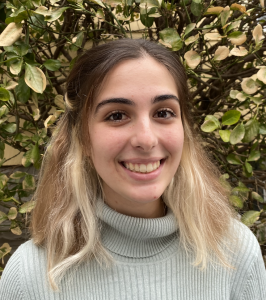 Lindsay Diab
Lindsay Diab
Majors: Math and Biology
Graduation: Spring 2024
About Me: I’m interested in genetics and molecular biology, specifically looking at DNA fragility and potential applications to cancer research. I hope to pursue a Ph.D. in molecular biology after my time at Tufts and eventually conduct research as a career. When not in the lab, I love to bake, read, and I am very active in both student and department theater at Tufts.
Research Project: FRA16D is a common fragile site within the WWOX tumor suppressor gene in humans. Flex1 is a region of DNA within FRA16D that has been shown to cause fragility at FRA16D and is polymorphic for an (AT) repeat. (AT)34 forms a secondary cruciform structure in Flex1 and stalls DNA replication. The aim of my project is to determine how Mph1, a DNA helicase in S. cerevisiae, prevents fragility at Flex1 (AT)34. Understanding the ways a cell overcomes replication stalls at Flex1 (AT)34 could provide insight into potential cancer therapeutics down the line, as FRA16D is a site of mutations and translocations in many different types of cancer cells.
Arya Patel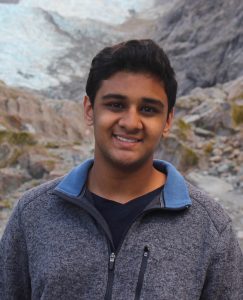
Majors: Biochemistry and Community Health
Graduation: Spring 2024
About Me: Currently, I am interested in neurobiology and the chemical mechanisms which underlie the process of learning and memory formation. In pursuit of a career as a physician-scientist, I am motivated by the prospect of uncovering targets for therapeutic intervention. Outside of the lab, I volunteer at Tufts EMS and enjoy skiing in my free time.
Research Project: Post-transcriptional modifications to transfer RNA (tRNA) nucleosides fine-tune tRNA structure and folding to facilitate amino acid charging and codon recognition. In response to conditioned electrical shock stimulation, multiple neuronal tRNA modifications have been found to prompt the synthesis of learning and memory-related proteins. My project aims to clarify the role of tRNA modifications in behavioral sensitization. By developing a protocol that quantifies both tRNA copies and modification abundance, I can determine whether the observed changes in neuronal translation regulation are due to increased tRNA expression or the modification of hypo-modified tRNAs.
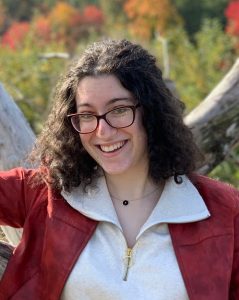 Leah Slepoi
Leah Slepoi
Majors: Biology
Graduation: Spring 2023
About Me: I am interested in genetics and molecular biology, especially in clarifying the causes and pathways of DNA damage and repair. My hope is that there will always be something new to learn and uncover. I plan to continue with research by pursuing a Ph.D. after finishing my time at Tufts.
Research Project: Trinucleotide repeat sequences (TNRs) in DNA are prone to increased fragility (breakage) and instability (expansions and contractions of the repeat). Fragility and instability increase when there are more transcription-replication conflicts (TRCs), or the convergence of transcription and replication forks. My project aims to determine which nuclease(s) are the cause of the increased fragility and instability at CAG repeats with increased TRCs. Further characterizing the pathways leading to damage at TNRs could be vital in the study of various genetic diseases, including Huntington’s disease.
Stefan Hansel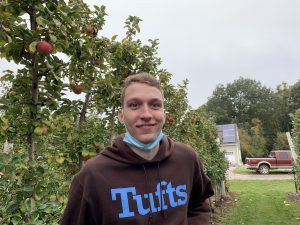
Majors: Biochemistry and Biotechnology
Graduation: Spring 2023
About Me: I’m most interested in discovering and learning the detailed chemical mechanisms that explain the processes occurring in our bodies. I’m aiming to join a Ph.D. program, and my dream is to become a professor one day. I also enjoy studying and practicing German for my minor, and outside of classes, I love to play volleyball with my club team and relax with some video games.
Research Project: My project aims to bring a better mechanistic understanding to the chemical process of glycation. Glycation is a non-enzymatic post-translational modification that has been linked to many diseases, and forms a diverse collection of possible advanced glycation end-products (AGEs). Due to its non-enzymatic nature and the variety of the products that form, there is a lack of mechanistic understanding in the field of glycation. I aim to synthesize isotopically labeled methylglyoxal (MGO), a common reactant of glycation, for mechanistic studies. I will then track which atoms of the MGO end up in specific AGEs and perform kinetic isotope effect experiments to deduce the mechanisms governing the formation of specific AGEs.
 Mia Chung
Mia Chung
Majors: Biology and English
Graduation: Spring 2022
About Me: I am interested in chemical biology and biomedicine, and eventually, I would like to pursue a Ph.D. in biochemistry with a focus on drug development. As a double biology and English major, I am passionate about effective and engaging scientific communication, and I love to explore the intersection between the sciences and humanities.
Research Project: My project explores binding patterns of a synthetic peptide library designed to selectively inhibit the protein GABARAP. GABARAP is one member of an important family of proteins which regulate autophagy, a cellular degradation pathway. To do this, I am measuring the binding affinities of the optimized peptides to all six members of this protein family. Understanding the specificity of these peptides could allow us to adapt them into drug-like molecules targeting the autophagy pathway.
Tara Lowensohn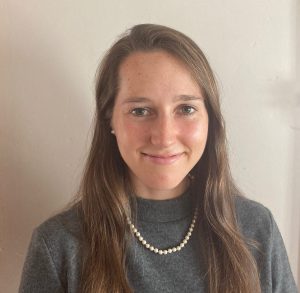
Major: Biochemistry
Graduation: Spring 2022
About Me: I enjoy working at the intersection of chemistry and biology to rationally design drugs against infectious diseases. I am eager to pursue a Ph.D. in chemical biology. Outside of the lab, I love cooking, spending time in the outdoors, and running with the Tufts Track & Field and Cross Country teams.
Research Project: Tuberculosis (TB) is the deadliest infectious disease in the world. The rise of multi-drug resistant strains of Mycobacterium tuberculosis (M. tb), the causative agent of TB, warrants the pressing need for new anti-TB drugs. My project investigates proteins called inteins as an underexplored anti-TB drug target. The goal of my project is to inhibit the conserved intein splicing process in three M. tb proteins with a single agent. Discovery of lead compounds that effectively inhibit intein splicing could unlock a new class of antimycobacterial agents to combat M. tb and aid the worldwide effort against these superbugs.
 Aidan Fike
Aidan Fike
Majors: Computer Science and Physics
Graduation: Spring 2020
About Me: I am interested in using computation as a tool for modeling complex chemical processes. I feel that physics-based simulations and various visualization techniques can give me a deeper understanding of core scientific principles. My current research is in modeling and understanding small chemicals, but I can see my future career going in several different directions.
Research Project: Cyclic peptides are a promising class of drug molecules, but their sequence–structure relationships are still not well understood. It is currently possible to calculate the conformations that a single cyclic peptide will take, but unfortunately, this method requires a large amount of computational power. To decrease the complexity of this problem, I am developing a machine-learning algorithm to help predict the structural ensemble of a given cyclic peptide with reduced computational cost. Optimally, this algorithm will be useful for efficient drug design using cyclic peptides.
Eriko Koide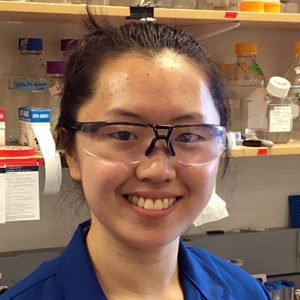
Major: Biochemistry
Graduation: Spring 2019
About Me: I am interested in investigating cellular processes that underlie fundamental biological functions and how they can be altered in the development of disease. I am interested in chemical biology, cellular biology, and immunology-based approaches to investigating these processes. I hope to further my research by pursuing a Ph.D. in one of these areas.
Research Project: Phosphotyrosine recognition domains are found in a large number of proteins that participate in many signaling networks in the human body. These domains are attractive targets for developing inhibitors, which could serve as therapeutic and investigative probes. However, phosphotyrosine itself is poorly cell-permeable, so it is necessary to develop minimally charged phosphotyrosine mimetics. To do this, I designed molecular mimics of a loop sequence of the human protein SHP2. SHP2 has an autoinhibited form with a loop binding its catalytic domain, and the loop may be binding by mimicking phosphotyrosine. This suggests the loop sequence could be harnessed as the basis for designing an SHP2 inhibitor. This would be the first report of the use of a naturally occurring autoinhibitory loop sequence to inhibit a protein tyrosine phosphatase.
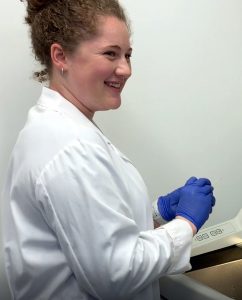 Hannah Vigran
Hannah Vigran
Major: Biology
Graduation: Spring 2020
About Me: As a kid, my favorite phrase was “what if”. I could take any question and spin it in a thousand different directions. So it’s no surprise that, at Tufts, I have found that I am learning much more in the research lab than in a traditional classroom setting! Currently, I am interested in studying development and regeneration in complex systems.
Research Project: I study limb regeneration in Xenopus frogs to learn lessons on how these amazing creatures can regenerate. I am also applying lessons learned in frogs to mammalian systems to see to what extent regeneration can be promoted in a non-regenerating animal.
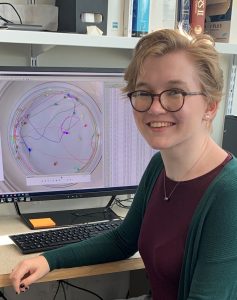 Katharine Bowers
Katharine Bowers
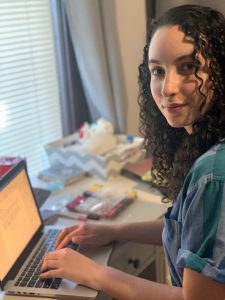 Sarah Shnayder
Sarah Shnayder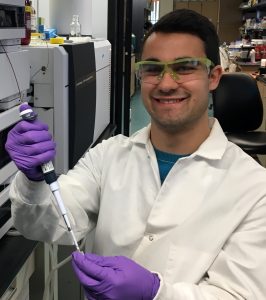
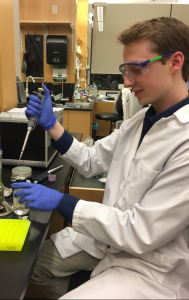 Charles Wollmuth
Charles Wollmuth













